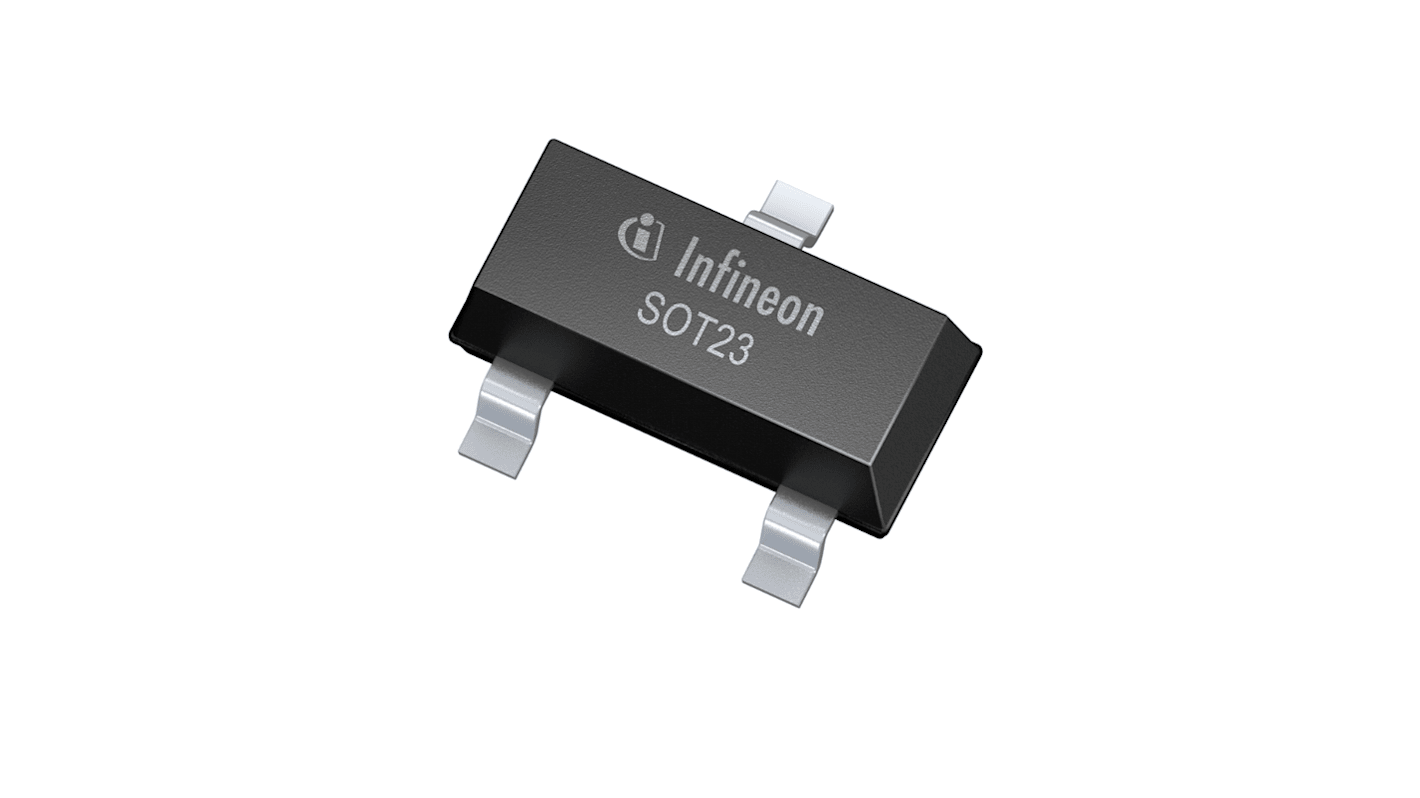Infineon Surface Mount Hall Effect Sensor Switch, SOT-23, 3-Pin
- RS Stock No.:
- 223-8625
- Mfr. Part No.:
- TLI49611MXTSA1
- Brand:
- Infineon

Bulk discount available
Subtotal (1 reel of 3000 units)*
£603.00
(exc. VAT)
£723.00
(inc. VAT)
FREE delivery for orders over £50.00
In Stock
- 3,000 unit(s) ready to ship
Need more? Click ‘Check delivery dates’ to find extra stock and lead times.
Units | Per unit | Per Reel* |
|---|---|---|
| 3000 - 3000 | £0.201 | £603.00 |
| 6000 - 6000 | £0.193 | £579.00 |
| 9000 + | £0.191 | £573.00 |
*price indicative
- RS Stock No.:
- 223-8625
- Mfr. Part No.:
- TLI49611MXTSA1
- Brand:
- Infineon
Specifications
Technical Reference
Legislation and Compliance
Product Details
Find similar products by selecting one or more attributes.
Select all | Attribute | Value |
|---|---|---|
| Brand | Infineon | |
| Sensor Type | Magnetic Field Sensor | |
| Technology | Hall Effect | |
| Mounting Type | Surface Mount | |
| Magnetic Type | Bipolar | |
| Maximum Operating Supply Voltage | 32 V | |
| Minimum Operating Supply Voltage | 3 V | |
| Package Type | SOT-23 | |
| Pin Count | 3 | |
| Maximum Operating Temperature | +125 °C | |
| Minimum Operating Temperature | -40 °C | |
Select all | ||
|---|---|---|
Brand Infineon | ||
Sensor Type Magnetic Field Sensor | ||
Technology Hall Effect | ||
Mounting Type Surface Mount | ||
Magnetic Type Bipolar | ||
Maximum Operating Supply Voltage 32 V | ||
Minimum Operating Supply Voltage 3 V | ||
Package Type SOT-23 | ||
Pin Count 3 | ||
Maximum Operating Temperature +125 °C | ||
Minimum Operating Temperature -40 °C | ||
Infineon Hall Effect Sensor Switch, 32V Maximum Operating Supply Voltage, Surface Mount - TLI49611MXTSA1
This Hall Effect Sensor Switch is intended for effective magnetic field sensing in various applications. Utilising Hall Effect Technology, it functions efficiently across a broad voltage range, making it suitable for industrial and consumer electronics. Its compact form enables straightforward integration into existing systems, catering to the increasing need for high-performance sensors in automation and control settings.
Features & Benefits
• Operates with supply voltages from 3V to 32V
• Overvoltage capability up to 42V
• Low power consumption of only 1.6mA in active mode
• Built-in protection against overcurrent and overheating
• Stable magnetic thresholds for accurate switching behaviour
• Overvoltage capability up to 42V
• Low power consumption of only 1.6mA in active mode
• Built-in protection against overcurrent and overheating
• Stable magnetic thresholds for accurate switching behaviour
Applications
• Rotor position detection in motors
• requiring index counting
• Systems demanding high precision
• Automation projects for effective sensing
• Consumer electronics for functional enhancements
• requiring index counting
• Systems demanding high precision
• Automation projects for effective sensing
• Consumer electronics for functional enhancements
What is the minimum and maximum operating temperature range?
The optimal operating temperature is between -40°C and +125°C, making it suitable for challenging environments.
How should I connect the sensor to my circuit for best results?
Ensure connections follow the pin configuration, applying the correct supply voltage to achieve the desired output behaviour.
What is the significance of the overvoltage capability?
The overvoltage capability provides durability against voltage spikes, ensuring the device operates effectively under varied electrical conditions.
Is there a specific circuit design recommended for installation?
In certain configurations, incorporating a resistor in the application circuit is suggested to manage current and maintain the sensor's reliability.
